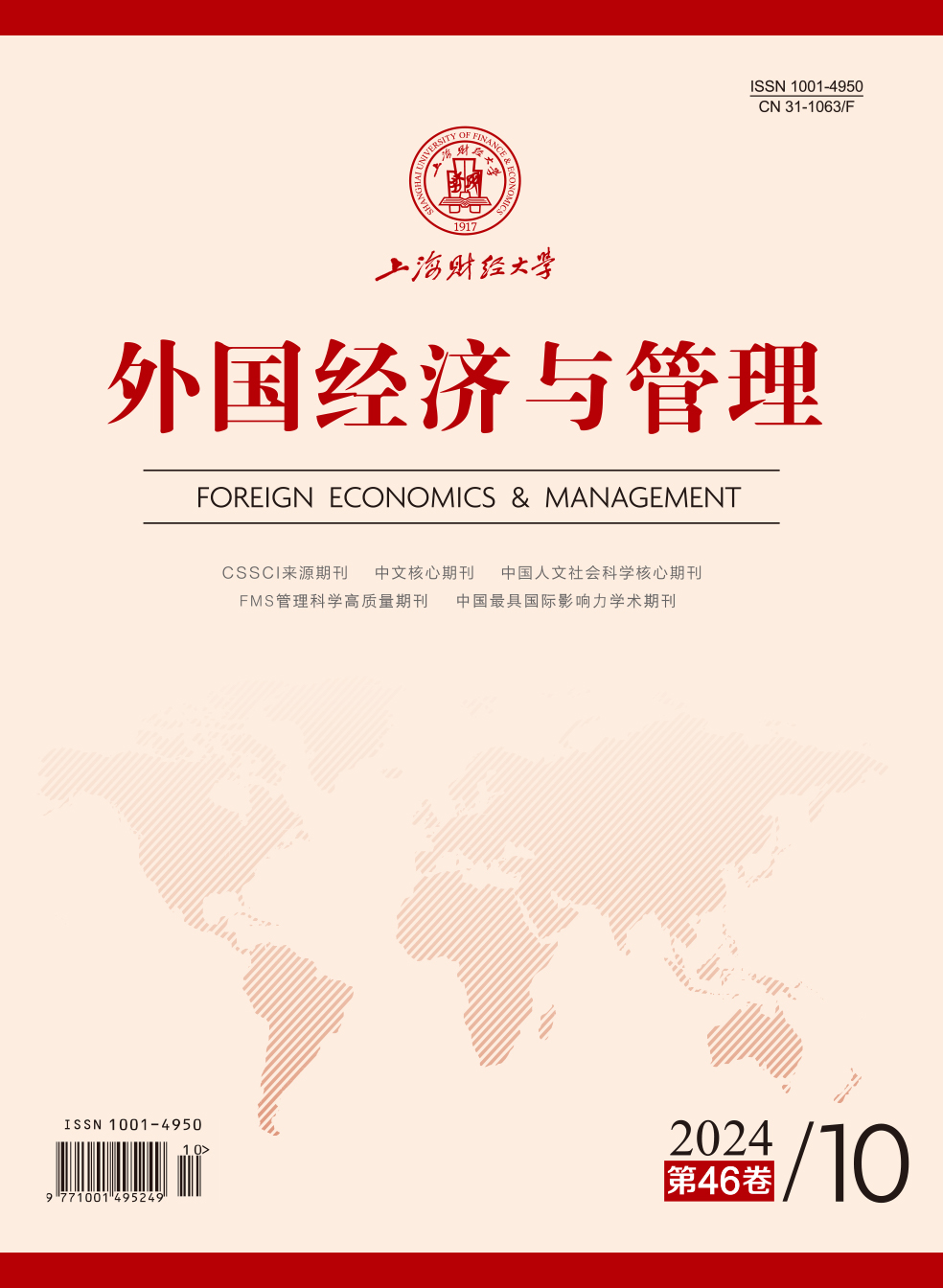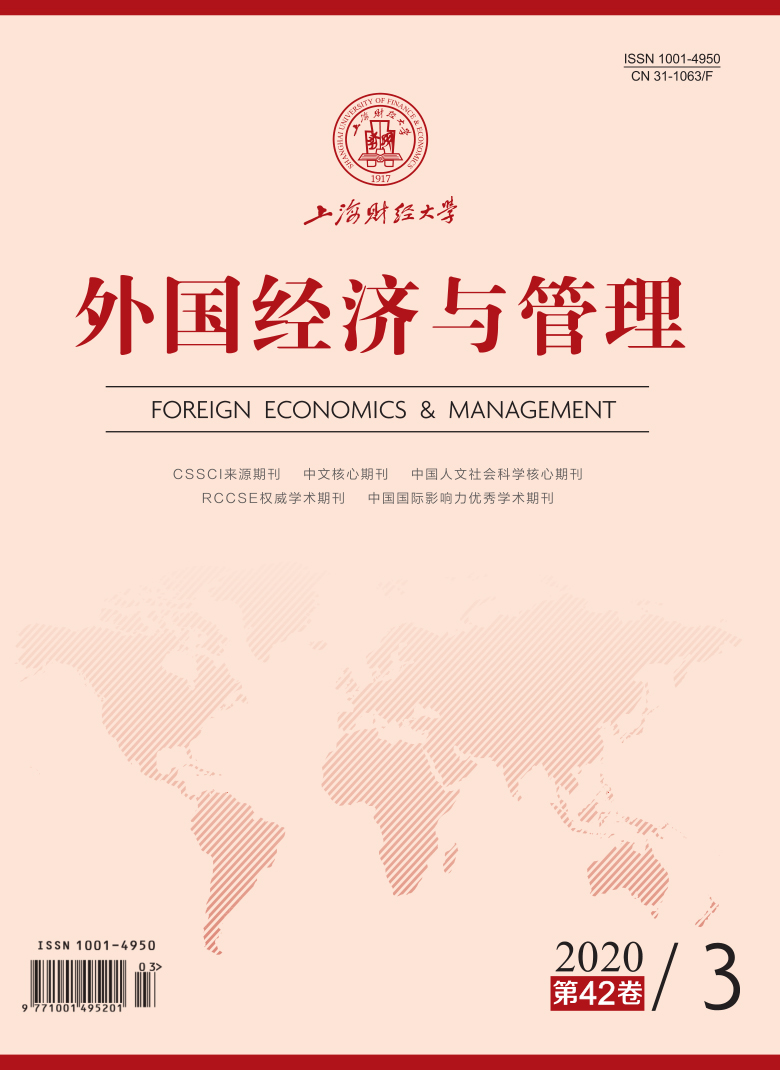[1] Cai D, Shen D Y, Liu X P. Are the family-controlled listed companies more willing to donate? [J]. Modern Economic Science, 2016, (02): 103-114.
[2] Chen L, Chen H. The clan involvement, the socio-emotional wealth and the corporate charitable contributions: A case study based on the survey of the private enterprises all over China [J]. Management World, 2014, (08): 90-101.
[3] Chen L, Li X C, Chu X P. The social role of Chinese family business: The past, the present, the future[M]. Zhejiang University Press, 2011.
[4] Chu X P. Family business research: A topic of modern significance[J]. Social sciences in China, 2000, (05): 51-58.
[5] Dou J S, Jia S H. Dynamic research on the theory of intergenerational succession of family firms[J]. Foreign Economics & Management,2007, (02): 45-50.
[6] Gao Y Q, Chen Y J, Zhang Y J. “Red scarf” or “green scarf”: Research on the charitable donation motives of private enterprise[J]. Management World, 2012, (08): 106-114.
[7] Gao Y Q,He X B, Li L L. Business owners' social status, economic achievement and corporate philanthropy[J]. Economic Research Journal, 2011, (12): 111-123.
[8] Jia M, Zhang Z. Does political connection influence corporate philanthropy? [J]. Management World, 2010, (04): 99-113.
[9] Li W A, Wang P C,Xu Ye K. Philanthropy, political connection and debt finance: Reciprocal behavior of governments and private enterprises[J]. Nankai Business Review, 2015, (01): 4-14.
[10] Liang Q, Liu J Q,Zhou L, Xu E M. How does next generation involvement increase firm value evidence from listed family firms in China[J]? South China Journal of Economics, 2013, (12): 51-62.
[11] Wang K W, Jin Z M, Jiao J. Strategic group membership, corporate charitable contribution and performance: Evidence from Chinese real estate industry[J]. Nankai Business Review,2014, (06): 53-62.
[12] Xu J H, Li S M, Zhang D. Family involvement, institutional environment and corporate voluntary social responsibility: Study based on the tenth survey of the private enterprises all over China[J]. Business Management Journal, 2018, 40(05): 37-53.
[13] Ye Y, Li K Y. The scale of enterprise,family involvement and private enterprises donation: Research based on strategic motivation [J]. Contemporary Finance & Economics, 2017, (12): 78-86.
[14] Yu X D, Liu G, Liang H. Kinship combinations and efficient governance patterns in family business: A qualitative comparative analysis of Chinese listed family firms [J]. China Soft Science, 2018, (3): 153-165.
[15] Zhong H W. The Synthetic Analysis on the Functions of Corporate Philanthropy[J]. China Industrial Economics, 2007, (02): 75-83.
[16] Zhu B. Selfish philanthropist: Family involvement and corporate social responsibility[J]. Sociological studies, 2015, (02): 74-97.
[17] Zhu H, Ye Q X,Li X C. The socio-emotional wealth theory and its break in the research on family business [J]. Foreign Economics & Management, 2012, (12): 56-62.
[18] Berrone P, Cruz C, Gomez-Mejia L R. Socioemotional wealth in family firms theoretical dimensions, assessment approaches, and agenda for future research[J]. Family Business Review,2012,25(3):258-279.
[19] Berrone P, Cruz C, Gomez-Mejia L R, Larraza-Kintana M. Socioemotional wealth and corporate responses to institutional pressures: Do family-controlled firms pollute less?[J]. Administrative Science Quarterly,2010,55(1):82-113.
[20] Bingham J B, Dyer W G, Smith I, Adams G L. A stakeholder identity orientation approach to corporate social performance in family firms[J]. Journal of business ethics,2011,99(4):565-585.
[21] Brammer S, Millington A. Corporate Reputation and Philanthropy: An Empirical Analysis[J]. Journal of Business Ethics,2005,61(1):29-44.
[22] Brammer S, Millington A, Pavelin S. Is philanthropy strategic? An analysis of the management of charitable giving in large UK companies[J]. Business Ethics: A European Review,2006,15(3):234-245.
[23] Breeze B.Natural philanthropists: Findings of the family business philanthropy and social responsibility inquiry[M].Institute for Family Business (UK), 2009.
[24] Chrisman J J, Chua J H, Pearson A W, Barnett T. Family involvement, family influence, and family-centered non-economic goals in small firms[J]. Entrepreneurship theory and practice,2012,36(2):267-293.
[25] Chua J H, Chrisman J J, Sharma P. Defining the family business by behavior[J]. Entrepreneurship theory and practice,1999,23:19-40.
[26] De Massis A, Frattini F, Lichtenthaler U. Research on Technological Innovation in Family Firms: Present Debates and Future Directions[J]. Family Business Review,2013,26(1):10-31.
[27] Dou J, Zhang Z, Su E. Does family involvement make firms donate more? Empirical evidence from Chinese private firms[J]. Family Business Review,2014,27(3):259-274.
[28] Du X. Is corporate philanthropy used as environmental misconduct dressing? Evidence from Chinese family-owned firms[J]. Journal of Business Ethics,2015,129(2):341-361.
[29] Dyer W G, Whetten D A. Family firms and social responsibility: Preliminary evidence from the S&P 500[J]. Entrepreneurship Theory and Practice,2006,30(6):785-802.
[30] Eichenberger E, Johnson J. Philanthropy: What it provides to families in business[J]. Tharawat Magazine,2013,10:327-330.
[31] Feliu N, Botero I C. Philanthropy in Family Enterprises[J]. Family Business Review,2016,29(1):121-141.
[32] Gautier A, Pache A. Research on Corporate Philanthropy: A Review and Assessment[J]. Journal of Business Ethics,2015,126(3):343-369.
[33] Goel S, Voordeckers W, van Gils A, van den Heuvel J. CEO's empathy and salience of socioemotional wealth in family SMEs–The moderating role of external directors[J]. Entrepreneurship & Regional Development,2013,25(3-4):111-134.
[34] Gomez Mejia L R, Makri M, Kintana M L. Diversification decisions in family-controlled firms[J]. Journal of management studies,2010,47(2):223-252.
[35] Gomez-Mejia L R, Cruz C, Berrone P, De Castro J. The bind that ties: Socioemotional wealth preservation in family firms[J]. The academy of management annals,2011,5(1):653-707.
[36] Gómez-Mejía L R, Haynes K T, Núñez-Nickel M, Jacobson K J, Moyano-Fuentes J. Socioemotional wealth and business risks in family-controlled firms: Evidence from Spanish olive oil mills[J]. Administrative science quarterly,2007,52(1):106-137.
[37] Graves C, Thomas J. Determinants of the internationalization pathways of family firms: An examination of family influence[J]. Family Business Review,2008,21(2):151-167.
[38] Gray L. The three forms of governance: A new approach to family wealth transfer and asset protection, Part II[J]. The Journal of Wealth Management,2008,11(2):7.
[39] Hoy F, Rosplock K. Issues in multi-generation family companies[J]. Marilyn L. T, Robert J., David O. Handbook of research on entreprenuers' engagement in philanthropy. UK: Edward Elgar,2014:115-147.
[40] Husted B W, Allen D B. Corporate social responsibility in the multinational enterprise: Strategic and institutional approaches[J]. Journal of International Business Studies,2006,37(6):838-849.
[41] Kraus S, Harms R, Fink M. Family firm research: sketching a research field[J]. International Journal of Entrepreneurship and Innovation Management,2011,13(1):32-47.
[42] Li W, Au K Y, He A, Song L. Why Do Family-controlled Firms Donate to Charity? The Role of Intrafamily Succession Intention, Social Status, and Religiosity[J]. Management and Organization Review,2015:1-24.
[43] Liang Q, Li X, Yang X, Lin D, Zheng D. How does family involvement affect innovation in China?[J]. Asia Pacific Journal of Management,2013,30(3):677-695.
[44] Liang X, Wang L, Cui Z. Chinese private firms and internationalization effects of family involvement in management and family ownership[J]. Family Business Review,2014,27(2):126-141.
[45] Litz R A, Stewart A C. Charity begins at home: Family firms and patterns of community involvement[J]. Nonprofit and Voluntary Sector Quarterly,2000,29(1):131-148.
[46] Pan Y, Weng R, Xu N, Chan K C. The role of corporate philanthropy in family firm succession: A social outreach perspective[J]. Journal of Banking & Finance,2018,88:423-441.
[47] Patel P C, Chrisman J J. Risk abatement as a strategy for R&D investments in family firms[J]. Strategic Management Journal,2014,35(4):617-627.
[48] Schwass J, Lief C. About family, business and philanthropy[J]. Perspectives for managers,2008(165):1.
[49] Sciascia S, Mazzola P. Family involvement in ownership and management: Exploring nonlinear effects on performance[J]. Family Business Review,2008,21(4):331-345.
[50] Suisse C. Funding as a family: Engaging the next generation in family philanthropy (White Paper 02)[J]. Credit Suisse Securities, USA,2010.
[51] Zellweger T M, Astrachan J H. On the emotional value of owning a firm[J]. Family Business Review,2008,21(4):347-363.
[52] Zellweger T M, Kellermanns F W, Chrisman J J, Chua J H. Family control and family firm valuation by family CEOs: The importance of intentions for transgenerational control[J]. Organization Science,2012,23(3):851-868.
[53] Zellweger T M, Nason R S. A stakeholder perspective on family firm performance[J]. Family Business Review,2008,21(3):203-216.
[54] Zhang J, Yang B, Wang F, Wang P. Corporate philanthropic giving: Active responsibility or passive ingratiation? Evidence from Chinese family-controlled listed companies[J]. Journal of Applied Business Research,2012,28(3):427.
[55] Zhang R, Zhu J, Yue H, Zhu C. Corporate philanthropic giving, advertising intensity, and industry competition level[J]. Journal of Business Ethics,2010,94(1):39-52.





 , 2, 3
, 2, 3 4130
4130  4071
4071

